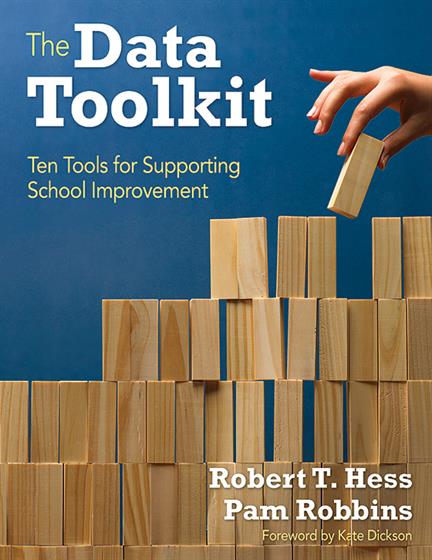Foreword by Kate Dickson
Preface
Acknowledgments
About the Authors
Introduction
Chapter 1: Build Your Team
The Power of Relationships
Tool 1: The Smalley Team-Building Personality Test
Another Team-Building Strategy: Using Objects to Reflect Personalities
High-Functioning Teams
Improvement Means Change, and Change Means Conflict
Understanding How Change Occurs
Team Member Roles and Responsibilities
TIPS Framework for Data Teams
Additional Helpful Hints
Chapter 2: Identify the Problem: Using Data to Transform Our Intentions
Tool 2: Identify the Problem
Using Data to Unpack the Problem of Mobility
Vertical Alignment and Mobility
Using Identify the Problem in a Classroom
Data Reflection Helps Budget Woes
A Happy Ending to Budget Woes
In the Field: Identify the Problem
Putting It All Together
Chapter 3: The Three Guiding Questions: Making Instruction Work
Data and Conversation
Tool 3: Three Guiding Questions
How to Use Three Guiding Questions
Asking the Right Questions
The Power of Thinking
Corbett: A District That Thinks
Conversation Promotes Thinking and Reflection
In the Field: Three Guiding Questions
Putting It All Together
Chapter 4: Analyze Your Students: Let the Data Decide
Teach to the Top
Analyzing Driving Quantitatively
Creating the Standard
Measuring to a Standard
The Kennewick Model
Analyzing Students in Local Districts
Classroom Example
In the Field: A Kindergarten Success
Putting It All Together
Chapter 5: Four Quadrants: Creating Crosshairs With Data
Tool 5: Four Quadrants: Creating Crosshairs With Data
Reeves's Four Quadrants: Lucky, Leader, Loser, and Learner
Using the Four Quadrants to Gauge RTI Progress
Using the Four Quadrants to Analyze Classroom Data
Classroom Example: Third-Grade Classroom Data in Four Quadrants
Using the Four Quadrants to Analyze Grade-Level, School-Level, and District-Level Data
Teacher and Principal Effectiveness in Four Quadrants
Instructional Leadership Standards for Principals
Building Management Standards for Principals
Teacher Effectiveness in the Four Quadrants
Classroom-Based Instructional Standards
Non-Classroom-Based Standards
In The Field: Analyzing Freshman Failures
Putting It All Together
Chapter 6: Wagon Wheel: Using Multiple Points of Data to Drive Instruction
Tool 6: Wagon Wheel
Mapping Fourth-Grade Writing on the Wagon Wheel
Reflecting on the Data
Using the Wagon Wheel to Measure InTASC Standards
Learner and Learning
Content Knowledge
Instructional Practice
Professional Responsibility
In The Field: Using the Wagon Wheel to Analyze RTI Effectiveness
Putting It All Together
Chapter 7: Five Whys: The Power of Questions
Tool 7: Five Whys
Persistent Achievement Gaps
A Diverse District Beating the Odds
Schools Beating the Odds
The Power of Working Together
Teaching Students to Think
21st Century Skills: The Future is Now
In The Field: Implementing a Core Program
Putting It All Together
Chapter 8: Relations Diagram: Discovering the Key Drivers
Tool 8: Relations Diagram
Tackling Discipline Problems
Motivating Students
In The Field: READ 180 Revisited
Putting It All Together
Chapter 9: The Fishbone: Making a Difference With Data
Leadership Matters
Real Education Reform
Making a Difference in the Classroom
Tool 9: The Fishbone
Improving Tenth-Grade Math Scores
Everyone Writes
In The Field: Green Acres, The Place to Be
Putting It All Together
Chapter 10: School Improvement Mapping: Making Strategic Decisions and Taking Action
Tool 10: School Improvement Mapping
Goal Setting
Using Data to Drive Goals
Clear Strategies
Specific Actions
Improving Writing Districtwide with Goals, Strategies, and Actions
Creating the Building Blocks of Excellence
Hiring the Best
Professional Development
Evaluation for Meaningful Feedback
Improving Instructional Feedback
The Power of Mentoring as an Improvement Tool
Moving to the Next Level: A New Model of Systemic Improvement
Running in Circles
Collaboration = Connectivity
Stepping Up to Collaboration
In The Field: High School Mentoring Project
Putting It All Together
11. Now What? Using the Tools in the Classroom, School, and District
Tool 1: The Smalley Team-Building Personality Test
Tool 2: Identify the Problem
Tool 3: Three Guiding Questions
Tool 4: Analyze Your Students
Tool 5: Four Quadrants
Tool 6: Wagon Wheel
Tool 7: Five Whys
Tool 8: Relations Diagram
Tool 9: The Fishbone
Tool 10: School Improvement Mapping
References
Index




